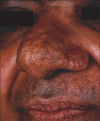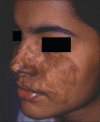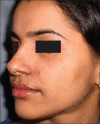Carbon dioxide laser guidelines
- PMID: 20808594
- PMCID: PMC2918344
- DOI: 10.4103/0974-2077.58519
Carbon dioxide laser guidelines
Abstract
The carbon dioxide (CO(2)) laser is a versatile tool that has applications in ablative lasing and caters to the needs of routine dermatological practice as well as the aesthetic, cosmetic and rejuvenation segments. This article details the basics of the laser physics as applicable to the CO(2) laser and offers guidelines for use in many of the above indications.
Keywords: CO2 laser; CO2 pixel; dermatological surgery.
Conflict of interest statement
Figures














References
-
- Trimas SJ, Ellis DA, Metz RD. The carbon dioxide laser: An alternative for the treatment of actinically damaged skin. Dermatol Surg. 1997;23:885–9. - PubMed
-
- Phahonthep R, Sindhuphak W, Sriprajittichai P. Lidocaine iontophoresis versus EMLA cream for CO2 laser treatment in seborrheic keratosis. J Med Assoc Thai. 2004;87:S15–8. - PubMed
-
- Fulton JE, Rahimi AD, Helton P, Dahlberg K, Kelly AG. Disappointing results following resurfacing of facial skin with CO2 lasers for prophylaxis of keratosis and cancers. Dermatol Surg. 1999;25:729–32. - PubMed
-
- Fitzpatrick RE, Goldman MP, Ruiz-Esparza J. Clinical advantage of the CO2 laser superpulsed mode.Treatment of verruca vulgaris, seborrheic keratosis, lentigines and actinic cheilitis. J Dermatol Surg Oncol. 1994;20:449–56. - PubMed
-
- Quaedvlieg PJ, Ostertag JU, Krekels GA, Neumann HA. Delayed wound healing after three different treatments for widespread actinic keratosis on the atrophic bald scalp. Dermatol Surg. 2003;29:1052–6. - PubMed
LinkOut - more resources
Full Text Sources
Medical

